LATEST BLOGS
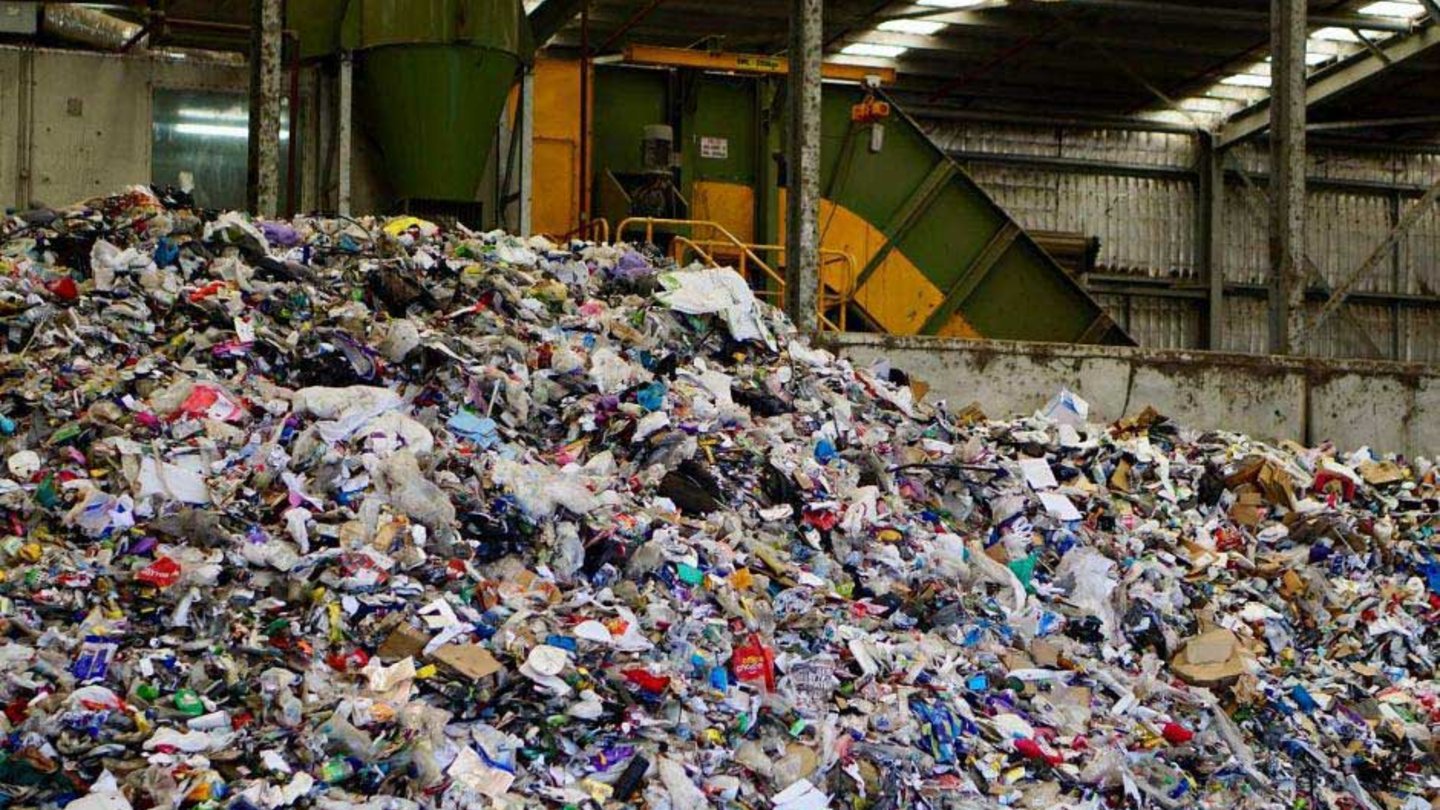
Single Use Plastic | Recycling - Part Two
By Terry Smith | Blog | 26 Mar 2019
WHY IS SINGLE-USE PLASTIC CAUSING SUCH A PROBLEM TO THE MARINE ENVIRONMENT TODAY & FOR THE FUTURE? - Part Two Recycling
A bit about me
My name is Terry Smith and I am not a scientist. I grew up in the town of Dunedin, New Zealand, a quiet town with a small population. Located on the coast, I was surfing the Southern Ocean waters, which created a love for the ocean. Through my roles in the tourism industry, I travelled and learnt to scuba dive. It was amazing, I was hooked, so much so I become a Dive Instructor.
That was 15 years ago, and I still love the ocean. I try to spend as much time as possible in it or at least near it. Over the years I have travelled and worked in beautiful places with wonderous marine life, but something that has been bugging me for a while is the amount of plastic waste you see on every Scuba Dive. In Sydney, my BCD pockets would be full after every dive, with wrappers and of course, in some shape or form, plastic bottles. This is a major city with a kerbside recycling waste program in place. Travelling to remote destinations and islands, this underwater litter increases.
I am hoping to create awareness in these series of articles as most of us do not know where or how plastic is created, what is actually happening out there now, and what we can do to on a personal, national and international level, as this is becoming a larger issue for the planet, and all living here, great & small.
I hope these articles help you in some way or form.
Why is single-use plastic causing such a problem to the marine environment today & for the future?
Everyone is becoming increasingly concerned with the state of our environment both below and above the surface, as the degradation of the environment, is affecting everyone and every animal on the planet. There are many issues (climate change for example), but I want to look at the one aspect which is affecting the marine environment today. And that is:
Single-use Plastic (and plastic in general) usage & wastage
I will do a series of articles on plastics, in the hope to create more understanding, awareness of our use, and more importantly ways to reduce & recycle.
In the first article (Part One), what is plastic, the make-up, types and uses? - Please Read for background
The second article (Part Two) is about recycling, what you, countries, and companies are doing currently.
And the third article (Part Three is about what steps are needed, what’s in the pipeline, by companies, countries and what you the individual can do to reduce this problem. And how we can protect our future environment.
(For a summary of a collection of research completed on the marine plastic impact on marine life, click here)
PART TWO - Recycling
Part one Recap
In part one, we discussed the different types of plastics, the history and their usage.
What you would have noticed is that the plastic is not all one type and even though it looks the same, could actually be made up of different chemicals. So how do we tell them apart? How do we then recycle it and where?
I mentioned the system of identification at the end of part one with the number inside the chasing arrow triangle. I’m sure you are familiar with it as it represents the recycling today. But it's not that easy. This number identifies the “resin” or type of plastic but its not clear cut for recycling. For example, mixing numbers like "1" (PET) & "3" (PVC) and the "3" gets through the sorting process it will contaminant the whole re-use of number "1" PET, due to the high chlorine in PVC, making it unhealthy for food substances.
So, what do we do? We try to break it down into visuals of products with numbers also shown.
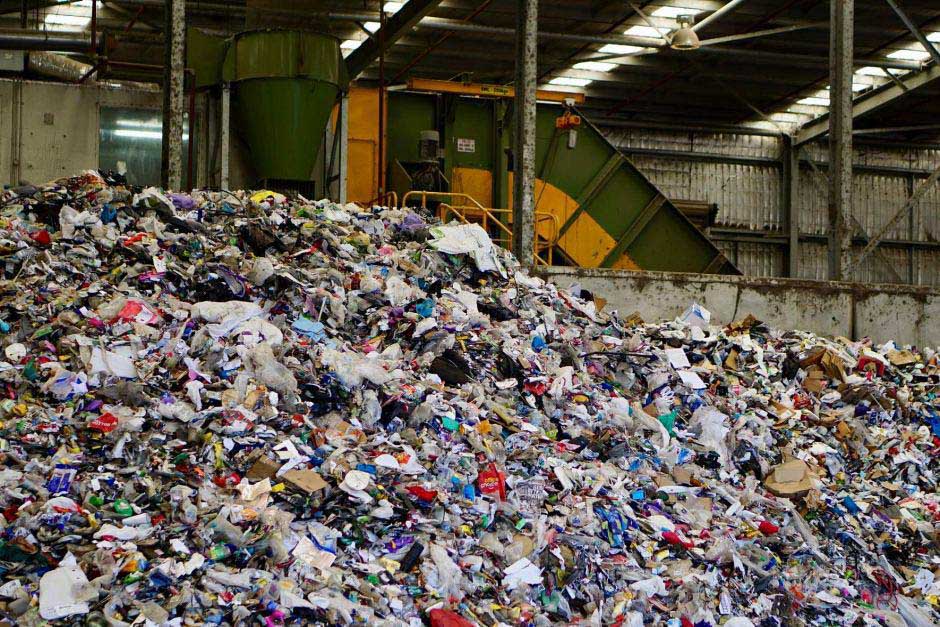
First, let’s look at:
Do we have a problem with Plastic?
Yes, of course, we do. Why?
A report puts close to 1 million plastic bottles (PET) are sold around the world each minute. There are many viral pics and videos floating (sorry for the pun) around on the internet. I think the one that stands out for me is the Raja Ampat, Indonesia, which showed manta ray’s swimming through a sea of plastic after a heavy rain.
Going back to part one, we use plastic because it’s convenient and in everything. If we look at a general picture of plastic waste, we see that it hasn’t been disposed of properly or is just discarded...
One example is, if we take a plastic PET bottle, this could have been thrown on the side of the road or lost out of a garbage can, by accident, either way, it sits in a gutter, on the road, normally with the lid on. A heavy rain occurs, and it's off! If it’s a beachside area it will end up in the ocean quickly, and if it's further away it may not make it in the first rain, but it will get into the sea eventually. All rivers flow into the sea…
This is of course very generalised, it may break down to smaller pieces by sunlight or get damaged. The smaller pieces will then still move with water flow. Another example would be the humble plastic bag, which can get blown around, and again end in the water, the list goes on.
To give you an idea of how this waste is affecting all parts of the world, they found a plastic bag at 35,754 feet or 10,898 meters underwater…! This single-use piece of plastic is the deepest piece of recorded human-made pollution. The Global Oceanographic Data Center (Godac) of the Japan Agency for Marine-Earth Science and Technology (Jamstec) launched for public use in March 2017, has a database on this as well as a video.
Plastic debris has been found in all major ocean basins (1), with an estimated 4 to 12 million metric tons of plastic waste generated on land entering the marine environment in 2010 alone (3)
And why is this a concern? Plastic has a long life, it will simply not just go away!
We need to dispose of it properly, but hopefully, reuse and recycle!
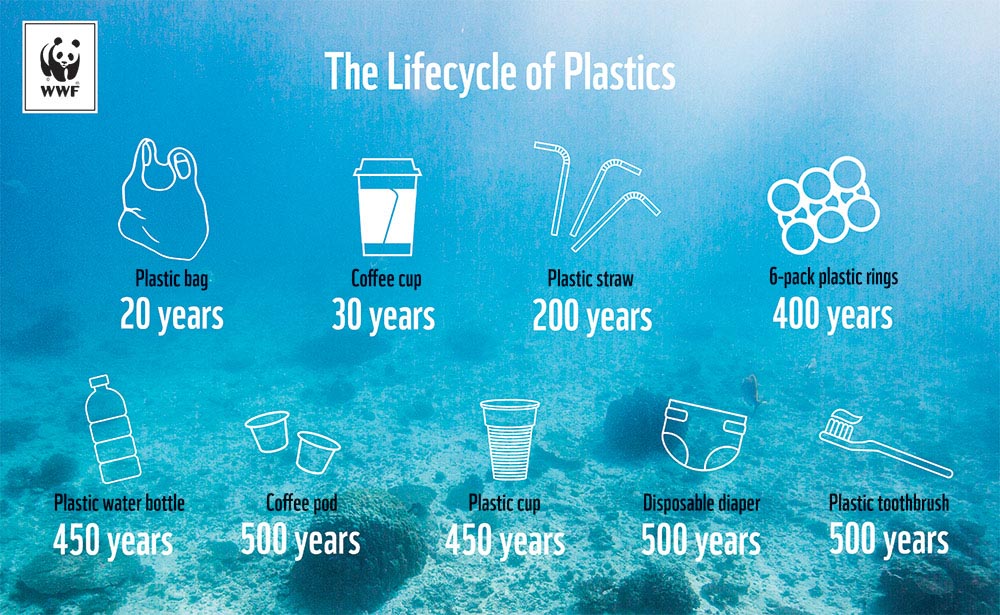
What is recycling?
Recycling as a definition: the action or process of converting waste into reusable material.
The definitions are given in the Australian Standard (AS/NZS 3831:1998) and the National Waste Report 2010 provides a clear definition of recycling.
The Australian Standard definition of recycling is:
[A] Set of processes (including biological) for converting recovered materials that would otherwise be disposed of as waste, into useful materials and or products.
The following definitions apply:
a) Closed loop recycling - recycling process in which the reclaimed output is used as an input to the same product system.
b) Open loop recycling - recycling process in which the reclaimed output is used as an input into another product system.
The Australian Standard defines something as recyclable if it is: ...able to be recovered, processed and used as a raw material for the manufacture of a useful new product through a commercial process.
People have been recycling their trash for thousands of years; ancient civilizations would melt down old metal products such as knives and swords and various metal household items to make coins and other new items. We do this still today with the recycling of steel and most metals.
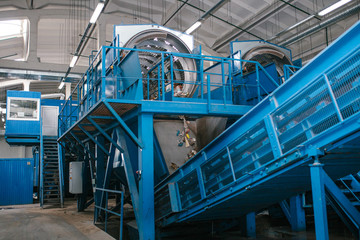
What role does recycle play?
I’m based in Australia so I will use Australia as my baseline.
Australians are great consumers and producers of plastic. Australia produces almost 3 million tonnes of plastic per annum, of which less than 12% is recycled. Alarmingly, up to 130,000 tonnes of that plastic will wind up in the ocean as plastic pollution each year. Considering each person produces (or uses) roughly 130 kg of plastic, it means that about 30 kg of each person's waste could end up in the ocean.
Not all plastics can be readily recycled. Hard thermoset plastics commonly used in electronics are currently unrecyclable, though researchers are finding ways to change that. Even for those plastics that are recyclable, the process often begins with mechanical or hand sorting into separate plastic polymer classes – again, represented by that number emblazoned within the recycling logo on the bottle or container – before reprocessing can begin.
Australia does have recycling companies which convert the recycling into products, but they are faced with more than technology issues, they are also faced with the consumer not wanting recycled products. (I will address this more in part three). We used to export it to China, but that has changed.
China announced it would no longer take plastic or what it termed as “foreign garbage”. In an announcement to the World Trade Organization in July 2017 that China would soon ban the import of 24 types of ‘solid waste’, including types of plastic and paper scrap that are end products of recycling programmes in Western countries. This Chinese ban, which will be fully implemented early sometime this year, affects an annual average of 619,000 tonnes of materials from Australia. (This ban has affected more than just Australia, as China took in over 30 million metric tonnes of waste from all over the world, including from the US, EU, and Japan).
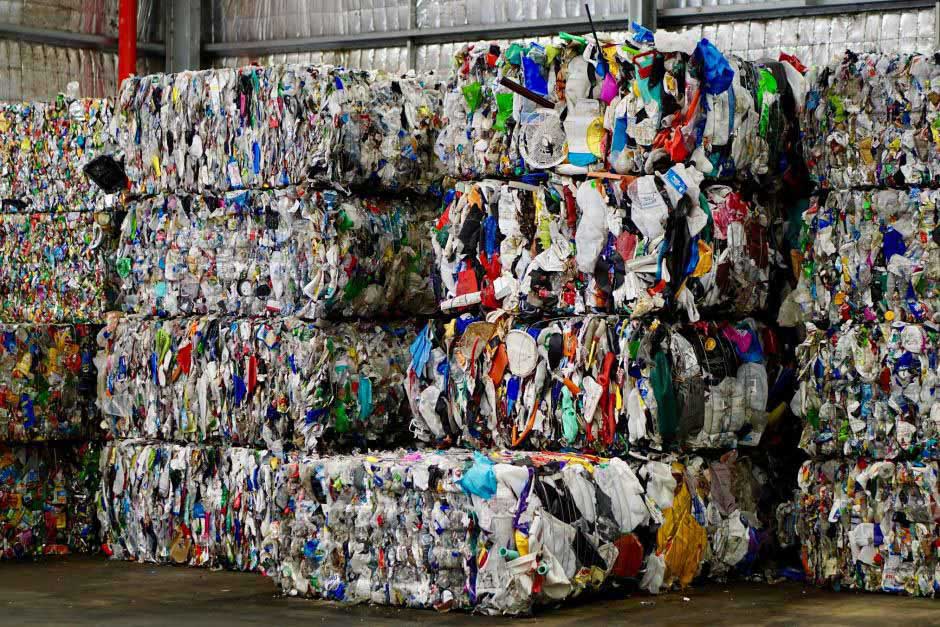
In the USA, plastic recycling is largely limited to drink containers although local authorities continue to expand the types of plastics collected for recycling. In general, citizen participation rather than industrial capacity limits the quantities of plastics recycled.
Since this ban U.S. plastics exports in 2017 changed: -- China down 35 per cent -- Thailand up 400 per cent -- Malaysia up nearly 295 per cent -- Vietnam up 105 per cent -- India up 34 per cent.
Hard facts
Before 1980, plastic recycling and incineration were negligible. Since then, only non-fibre plastics have been subject to significant recycling efforts.
The following results apply to non-fibre plastic only:
Global recycling and incineration rates have slowly increased to account for 18% & 24%, respectively, of non-fibre plastic waste generated in 2014. On the basis of limited available data, the highest recycling rates in 2014 were in Europe (30%) and China (25%), whereas in the United States, plastic recycling has remained steady at 9% since 2012 (3, 4, 5, 6,7 ). In Europe and China, incineration rates have increased over time to reach 40% & 30%, respectively, in 2014 (3, 6). However, in the United States, non-fibre plastics incineration peaked at 21% in 1995 before decreasing to 16% in 2014 as recycling rates increased, with discard rates remaining constant at 75% during that time period (5). Waste management information for 52 other countries suggests that in 2014, the rest of the world had recycling and incineration rates similar to those of the United States (7). To date, end-of-life textiles (fibre products) do not experience significant recycling rates and are thus incinerated or discarded together with other solid waste.
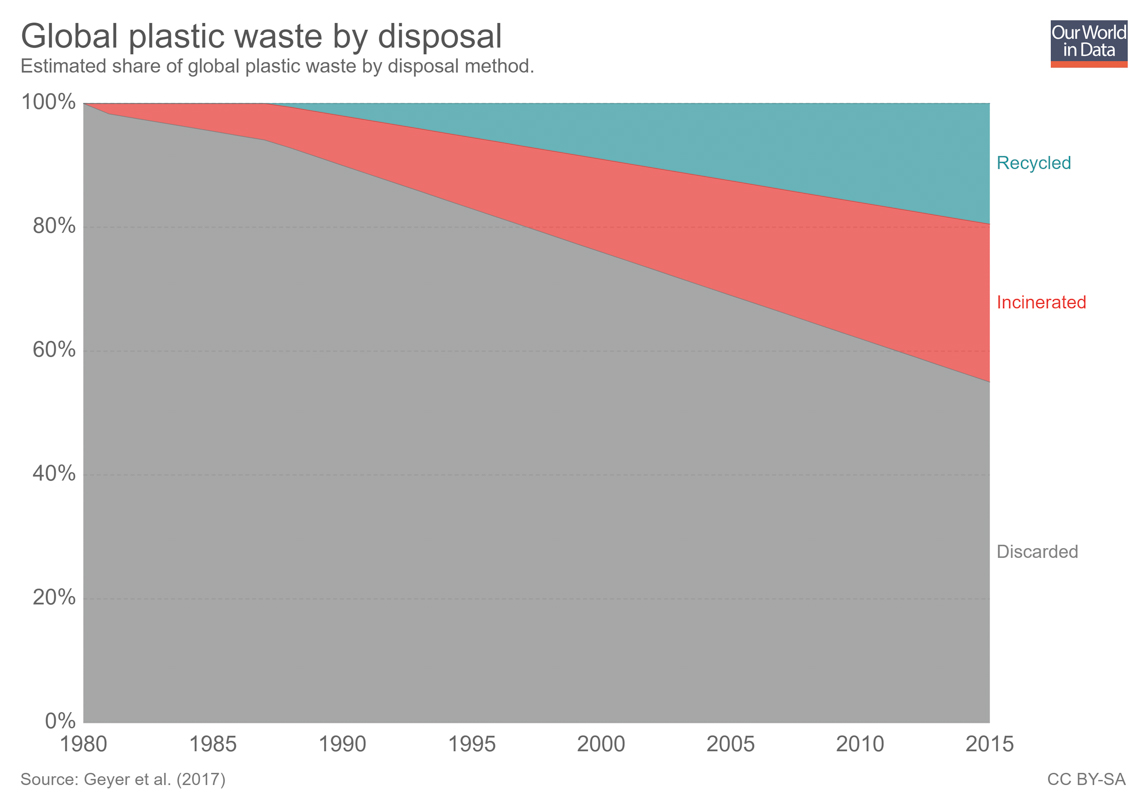
What does the number system represent?
The plastics we produce and consume can be recycled. The number coding system has been set up to cover all types of plastic in a convenient number form category. But again, the how and where will depend on your location, both town, state and country, if that number can be recycled from the kerbside or local area collection points.
There are seven in total with six being a type and the seven covering all others.
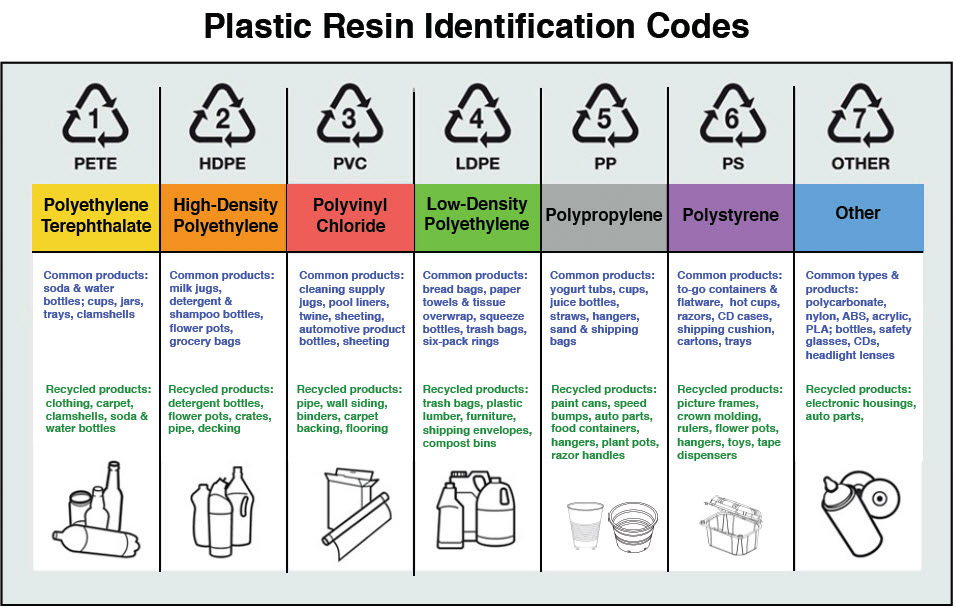
Number 1 - coded plastic is PET or PETE. Most common type and the most recyclable, but at the same time the most consumed and the most found item in landfills. Containers are clear and commonly used in packaging water, salad dressings, ketchup and soda. These types of bottles are often recycled to make fleece items and carpet.
Recyclable: YES
Possible recyclable goods: Clothing – Fleece items – (great wholesale company Repreve, check out their video), Carpets.
Number 2 - HDPE is high-density polyethylene. It is sturdier than number 1 plastic and may be opaque and is made in many different colours. Its cleaned crushed then made into pellets for the plastic industry. (It is more cost efficient to produce a product from recycled HDPE than it is to manufacture ‘virgin’ plastic.)
Recyclable: YES
Possible recyclable goods: rope, toys, piping, recycling bins, trash cans, benches, doghouses, picnic tables.
Number 3 - PVC or polyvinyl chloride. Hoses, shower curtains, records and vinyl flooring. A major problem in the recycling of polyvinyl chloride is the high chlorine content in raw PVC and high levels of hazardous additives added to the polymer to achieve the desired material quality (flexibility). As a result, PVC requires separation from other plastics before mechanical recycling. Can be mechanically crushed to be reused or chemically separated - (Pyrolysis, hydrolysis and heating into chemical compounds).
Recyclable: YES but no (must be separated first, any PVC contamination in other recycling numbers must be sent to landfill, so most kerbside will NOT take it)
Possible recyclable goods: other PVC products
Number 4 - low-density polyethylene (LDPE). Plastic food wrap, plastic bags, thin packaging (bread wrappings, dry cleaning, sandwich bags).
Recyclable: YES, but Kerbside NO – check your area (supermarkets do)
Possible recyclable goods: plastic wrap, plastic packaging, freezer bags, landscaping ties, floor tile.
Number 5 – Polypropylene. A hard plastic used for long-term food storage containers, used for hot liquids, plumbing. Also found in adventure clothing.
Recyclable: YES – but check with your local kerbside recycling program
Possible recyclable goods: landscaping border stripping, battery cases, brooms, bins and trays
Number 6 - polystyrene. This foam-type material is used in egg cartons and disposable coffee cups and is very hard to be recycled as most of it has 97% air. Its perhaps the worst type for the marine environment as it floats, and continually breaking down into smaller pieces never to degrade in our life time.
Recyclable: YES – but very rarely in kerbside, mainly ends in landfill
Possible recyclable goods: egg cartons, vents, rulers, foam packing, domestic building products
Note: Australia has a recycling program for EPS – Expanded Polystyrene but takes only large packaging i.e. packaging around new appliances or TV, and the vegetable boxes. It will not take packaging peanuts, food containers, juice holders, and other packaging… Locations are in this link
Number 7 – Miscellaneous plastic – “catch all”. Can be electronic coatings, auto parts, BPA hardened items, everything that could also be organic based. (Organic based should go into a landfill of general waste as it breaks down, not recycled as such). Organic compostable fall in here BUT they actually need commercial recycling due to the heat needed to break them down.
Recyclable: YES, but can be specialised recycling – most kerbside will say no
Possible recyclable goods: plastic timbers, custom made products
Plastic Bags
I have added this as a separate field as this is a concern for our marine world as a single item:
Number 2 - HDPE is high-density polyethylene.
Number 4 - low-density polyethylene (LDPE)
These are not to be added to the kerbside trash in any areas as far as my research shows as they need a different process.
Where to recycle?
Your local supermarket should have a facility to collect them. My local and Australia wide has REDcycle.
- The collected plastic is returned to RED Group’s facility for initial processing, then delivered to Victorian manufacturer Replas where it undergoes an incredible transformation.
- Replas uses the material as the resource to produce a huge range of recycled-plastic products, from fitness circuits to sturdy outdoor furniture, bollards, signage and more.
. In the United States, all the national grocery retailers (such as Kroger, Safeway, Target and Walmart) and many smaller retailers offer bag recycling collections in their stores. Collection bins are normally located near the exits.

Amazing link here for all United States to check by postcode on where to recycle plastic bags and other materials.
E-Waste
Electronic waste is becoming a larger issue. Today's society is investing in new items every day. Your company needs to keep up to speed so could change computers every few years. Laptops are considered old even one year from purchase. These are complex items in terms of what's inside and very had to recycle. The components can be highly toxic. Large landfills are dedicated just to computers and some countries trying to recycle components without the means to protect their workers. See this article. It's another issue which the world is facing.
How do we recycle?
Today we use the numbers as a baseline or guide to recycling but it has been come complicated, so pictures are used in conjunction. The following pictures are used in the State of Victoria, Australia. If products are not listed or not shown it's up to use to source the location to make the effort to recycle them i.e. car batteries. These tend to be at waste centres or council premises.
These pictures show the items to go in our "Yellow" kerbside bins so that the waste is collected and recycled. If the infrastructure for this is in place we should use it and make sure it is used properly as not contaminate the recycling.
Please check your area for the kerbside programs in place as they vary greatly based on location, state and country. In Australia, some councils use "Blue Bins" for newspaper & cardboard. For countries without this infrastructure, this is a core problem in the war on waste. (We will go into this more in Part 3).
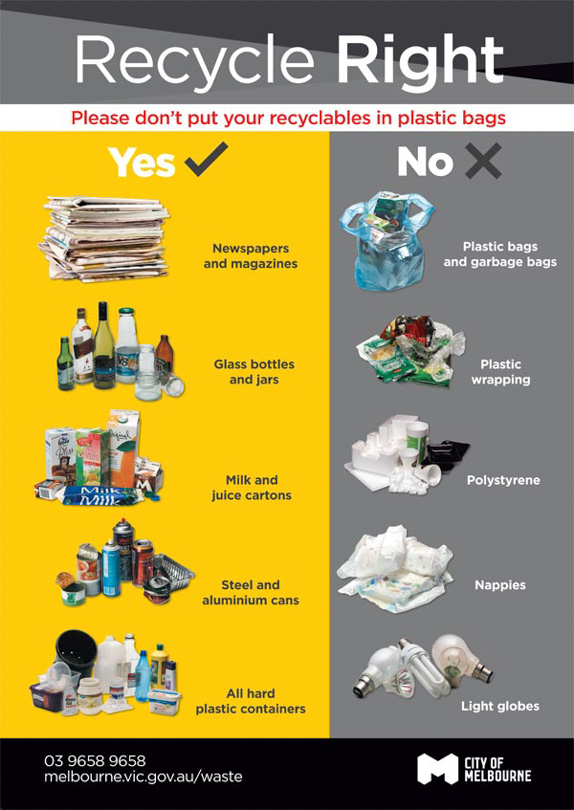
Where does it go to be recycled?
The process goes in a flow along these lines. Your council or a contracted waste collector picks it up and transports it the material recovery facility, where they are sorted either mechanically or manually from other recyclables. The resulting mixed plastics are sorted by plastic type, baled and sent to a reclaimer.
The scrap plastic is passed across a shaker screen to remove trash and dirt, then washed and ground into small flakes. A flotation tank then further separates contaminants, based on their different densities. Flakes are then dried, melted, filtered and formed into pellets, which are shipped to product manufacturing plants and made into new products.
In some countries, some waste is recycled into energy. Sweden uses this policy (but several debates arise over this. Is burning trash recycling? Emission occur but are considered the same as natural gas emissions – US EPA agrees.) (Part three will go more into this).
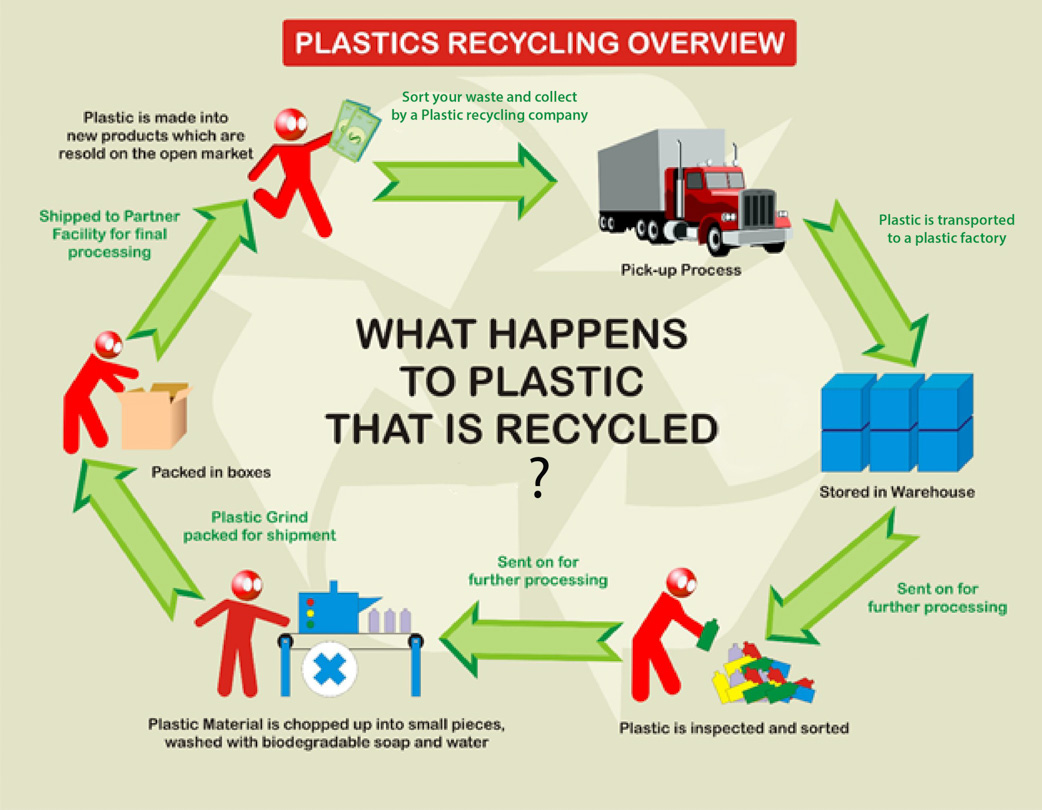
Is there a natural recycling option?
As yet no but there are some natural occurrences happening. One of those is Wax Worms
When they placed the worms on polyethylene plastic, they found that each worm created an average of 2.2 holes per hour. Overnight, 100 wax worms degraded 92 milligrams of a plastic shopping bag. At this rate, it would take these same 100 worms nearly a month to completely break down an average, 5.5-gram plastic bag.
Could this be commercial used? Studies are ongoing.
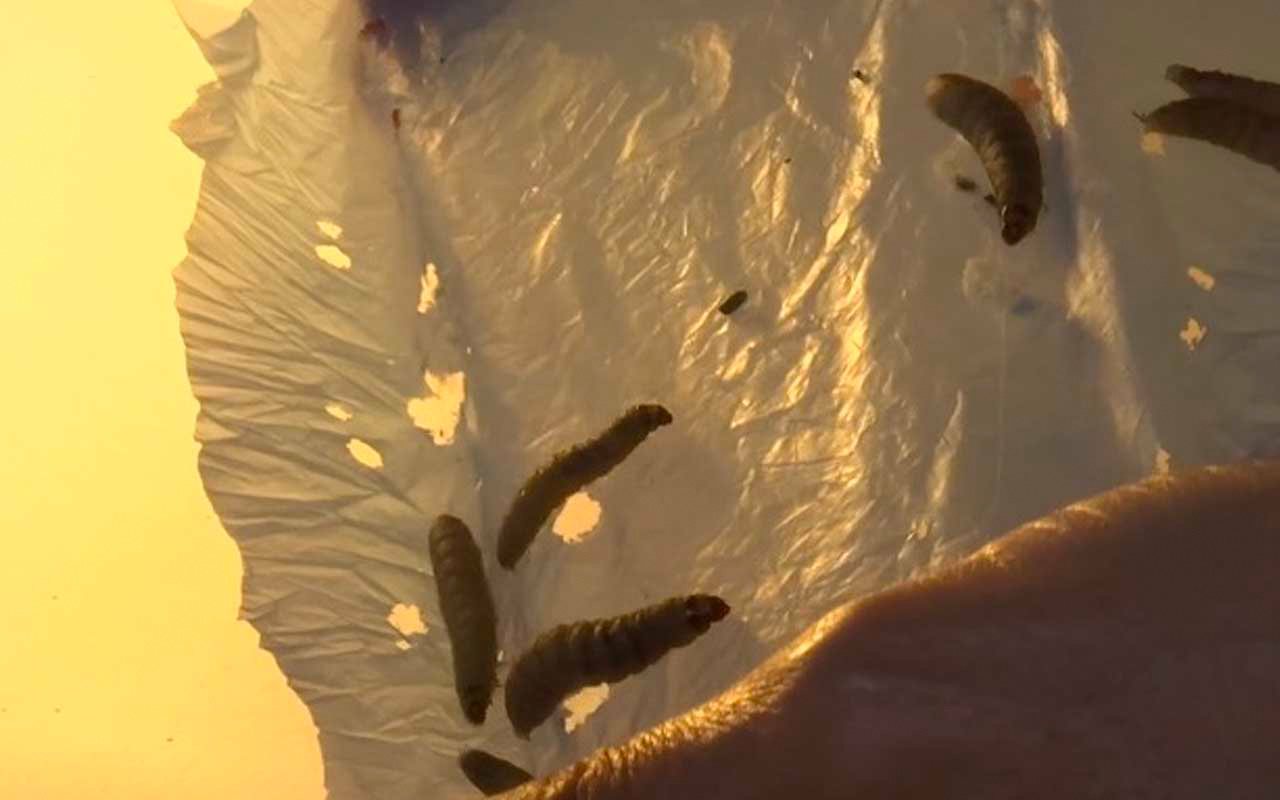
Benefits of Recycling
Not only do we reduce the waste on this planet, but it has other effects. Here are some facts:
These come from the use of the EPAs' Warm program analysed by Stanford University.
Aluminium. Recycling of aluminium cans saves 95% of the energy required to make the same amount of aluminium from its virgin source. One ton of recycled aluminium saves 14,000-kilowatt hours (Kwh) of energy, 40 barrels of oil, 130. 152.32 million BTU's of energy, and 10 cubic yards of landfill space.
Newsprint. One ton of recycled newsprint saves 601 kWh of energy, 1.7 barrels of oil (71 gallons), 10.2 million BTU's of energy, 60 pounds of air pollutants from being released, 7,000 gallons of water, and 4.6 cubic yards of landfill space.
Office Paper. One ton of recycled office paper saves 4,100 kWh of energy, 9 barrels of oil, 54 million BTU's of energy, 60 pounds of air pollutants from being released, 7,000 gallons of water, and 3.3 cubic yards of landfill space.
Plastic. One ton of recycled plastic saves 5,774 kWh of energy, 16.3 barrels of oil, 98 million BTU's of energy, and 30 cubic yards of landfill space.
Steel. One ton of recycled steel saves 642 kWh of energy, 1.8 barrels of oil, 10.9 million BTU's of energy, and 4 cubic yards of landfill space.
Glass. One ton of recycled glass saves 42 kWh of energy, 0.12 barrels of oil (5 gallons), 714,000 BTU's of energy, 7.5 pounds of air pollutants from being released, and 2 cubic yards of landfill space. Over 30% of the raw material used in glass production now comes from recycled glass.
As you can see the benefits of recycling across a wider range than just landfill.
Did you know Recycling is considered a commodity?
Yes, it is. Plastic, glass, steel etc. has its own supplier and demand. It is declining though. The kerbside waste program hasn’t made a profit for years.
In a way, I believe this is the issue as to why more recycling is not undertaken. Who will pay for it? As with every business it needs to make money to survive.
It's more about the reuse of materials which should be looked at in terms of saving the environment by raw materials, energy and then waste ( as mentioned above. New technology should enable this so that every state has a facility to either turn it into clean energy or reuse. )
In part three we will look at ways to make it a "Circular Economy".
What else can we do?
I’m not sure if your aware but recycling is very power consuming.
The recycling industry has an idea: put it in a power plant and burn it. This technique sounds crude, but it’s a well-established recycling management technique in other countries.
France, for example, has a plant right near the Eiffel Tower that provides power for 80,000 households.
And, believe it or not, it's good for the environment.
The Clean Energy Finance Corporation believes energy-from-waste is an idea with serious potential in Australia. The reports have potential with, identified, $3.3 billion of potential investment in the sector, potentially avoiding nine million tonnes of C02 emissions each year.
(This enters the Circular economy area which will be part three discussions).
Can we make recycling better?
Yes, the system needs improvement from collection through to the end result or re-use.
The number system can be confusing hence the use of pictures on bins, colours and infographics.
An Australian environmental group Planet Ark is trying to implement a better code system based just on the Recycling triangle. This is shown in the picture below. Many companies are on board like Australia Post, Blackmores, Nestlé, Officeworks, Unilever and Woolworths which have already pledged their commitment to using the labels. Let's see how this progresses.
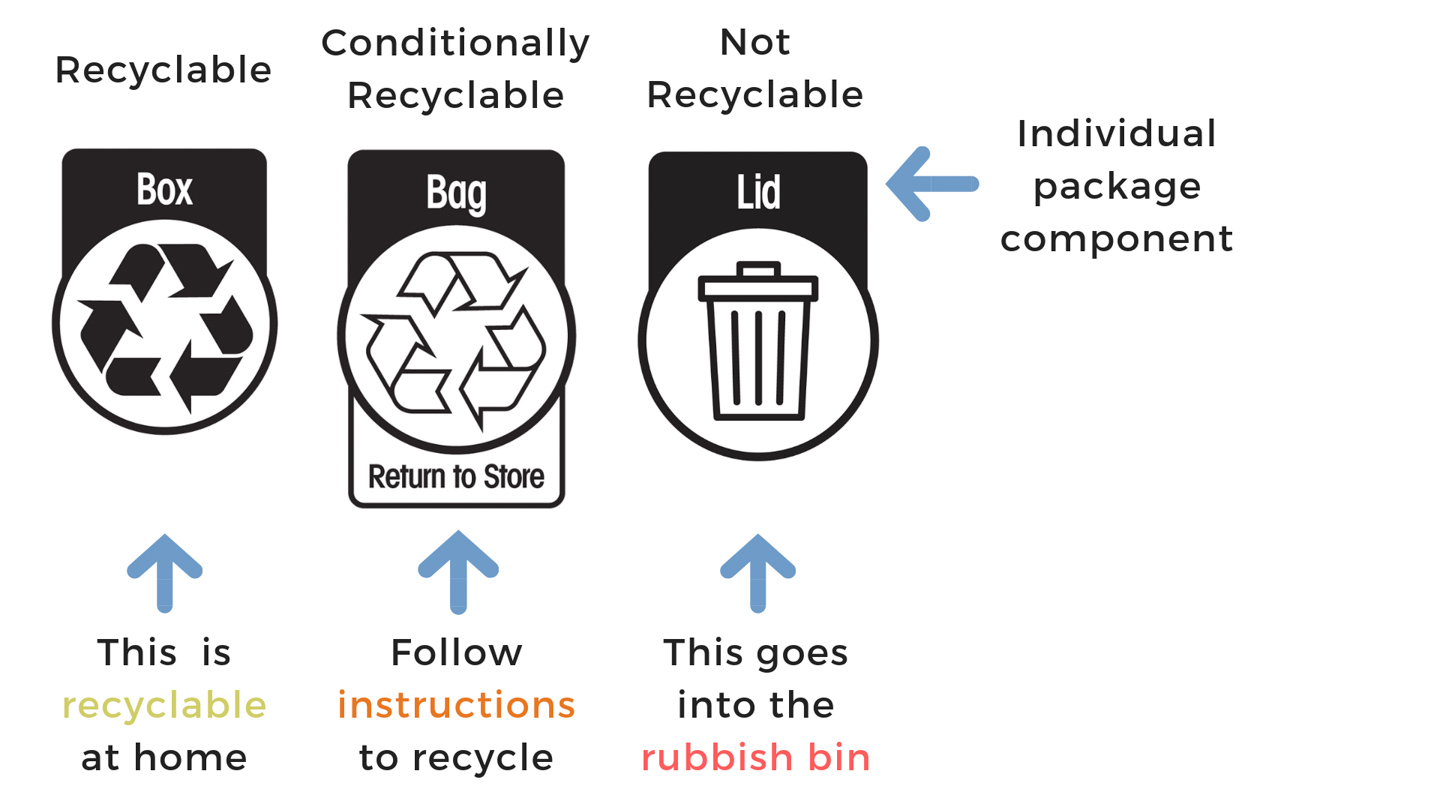
To Conclude
Yes, all plastic can be recycled in some way. But before you doubt me, let me finish.
Plastics are a beast. No easy formula can miraculously change one type of plastic to another ( yet ). Some Milk containers are lined with another type of plastic, which can not be extracted which then makes then un-recyclable. If we split those two types from the one final plastic product, then each can be recycled. That is the problem. If we can't distinguish between the materials in plastics, either too hard to split or too costly to split, at a chemical level its deemed "non-recyclable" and discarded to landfill. So each kerb - side contractor or council will not take certain types of plastics on this basis.
No easy solution. We need to re-think the makeup of each type of plastic, the usage of each ( REDUCE) and how can we make a cheap reusable ( REUSE) product that when we can't seem to re-use it any more, then be recycled (RECYCLE) with no waste and little energy to re-convert it back into its original product with either another recycled product or an organic additive which is sustainable and non-harmful to produce in our world today.
Part 3 to come covering, REDUCE, REUSE, RECYCLE
Resources:
https://www.bbc.com/news/magazine-35562253
http://science.sciencemag.org/content/344/6185/732
https://www.saiglobal.com/PDFTemp/Previews/OSH/As/as3000/3800/3831.PDF
- D. K. A. Barnes, F. Galgani, R. C. Thompson, M. Barlaz, Accumulation and fragmentation of plastic debris in global environments. Philos. Trans. R. Soc. B 364, 1985–1998 (2009).
- J. R. Jambeck, R. Geyer, C. Wilcox, T. R. Siegler, M. Perryman, A. Andrady, R. Narayan, K. L. Law, Plastic waste inputs from land into the ocean. Science 347, 768–771 (2015)
- PlasticsEurope, The Compelling Facts About Plastics: An Analysis of Plastic Production, Demand and Recovery for 2006 in Europe (PlasticsEurope, 2006).
- .U.S. Environmental Protection Agency (EPA), Municipal Solid Waste Generation, Recycling, and Disposal in the United States: Tables and Figures for 2012 (EPA, 2014).
- National Bureau of Statics of China, “Annual Data, China Statistical Yearbook, 1996-2016;” (www.stats.gov.cn/ENGLISH/Statisticaldata/AnnualData/).
- Z. Bing, China plastics recycling industry in 2008. China Plastics 23, 7 (2009).
- D. Hoornweg, P. Bhada-Tata, What a Waste: A Global Review of Solid Waste Management (Urban Development Series Knowledge Papers, World Bank, 2012)
http://epsa.org.au/wp-content/uploads/2014/01/EPSA-recycling-guidelines-and-requirements.pdf
http://epsa.org.au/where-can-i-recycle-eps/
https://archive.epa.gov/epawaste/nonhaz/municipal/web/html/airem.html
https://www.abc.net.au/news/2017-04-26/common-catepillar-can-eat-plastic-bags-at-high-speeds/8472368
https://www.cefc.com.au/media/222699/cefc-energy-from-waste-market-report-november-2016.pdf
https://www.isri.org/recycling-commodities/plastics
http://www.wrap.org.uk/about-us/about/wrap-and-circular-economy
https://planetark.org/recyclinglabel/
Recent
-
Thailand Arrival - Part 2
10 Apr 2022 -
Thailand pre-travel - Part 1
28 Feb 2022 -
CICI Turtle Conservation
1 Oct 2021 -
Galapagos Whale Shark Project - 2020 Research Trip Report
7 May 2021 -
Scuba Digital Dive Show
19 Oct 2020 -
Conflict Islands Dive Report
1 Oct 2020 -
SunButter Skin Care Partner
18 Jun 2020 -
The Galapagos Whale Shark Project
10 Jun 2020 -
Keep Supporting Conservation
1 Jun 2020 -
The Focus
5 Feb 2020



